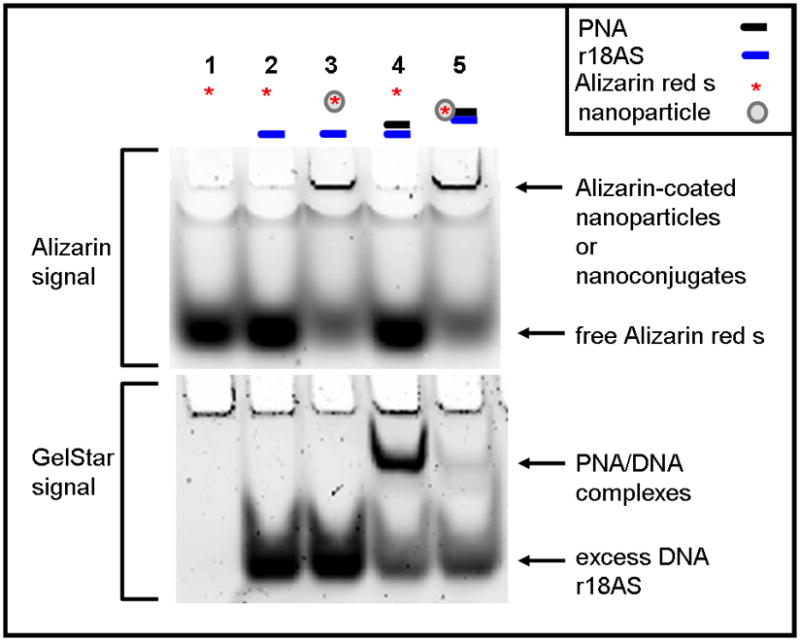Figure 1.

PNA-TiO2 nanoconjugates can be successfully conjugated and withstand incubation at 95°C. Lanes 1–4 contained control reactions: lane 1 is free Alizarin red s; lane 2 is a mixture of Alizarin red s and complementary oligonucleotide DNA; lane 3 is Alizarin red s conjugated nanoparticle (without PNA) and complementary oligonucleotide DNA; lane 4 contains a mixture of PNA (PNA-r18S), complementary oligonucleotide (r18AS) and Alizarin red s. The test sample (lane 5) contains a mix of Alizarin red s-coated TiO2-PNA and threefold molar excess of complementary r18AS oligonucleotide DNA. All samples were heated to 95°C for 2 minutes and slowly cooled to room temperature over 3 hours to allow annealing. After cooling, samples were run on a 16% polyacrylamide gel for approximately two hours and imaged for Alizarin red s, without separation of gel from the glass plates that contained it. The same gel was taken out of the glass plates, stained with GelStar to visualize DNA and DNA-PNA hybrids and then re-imaged.
